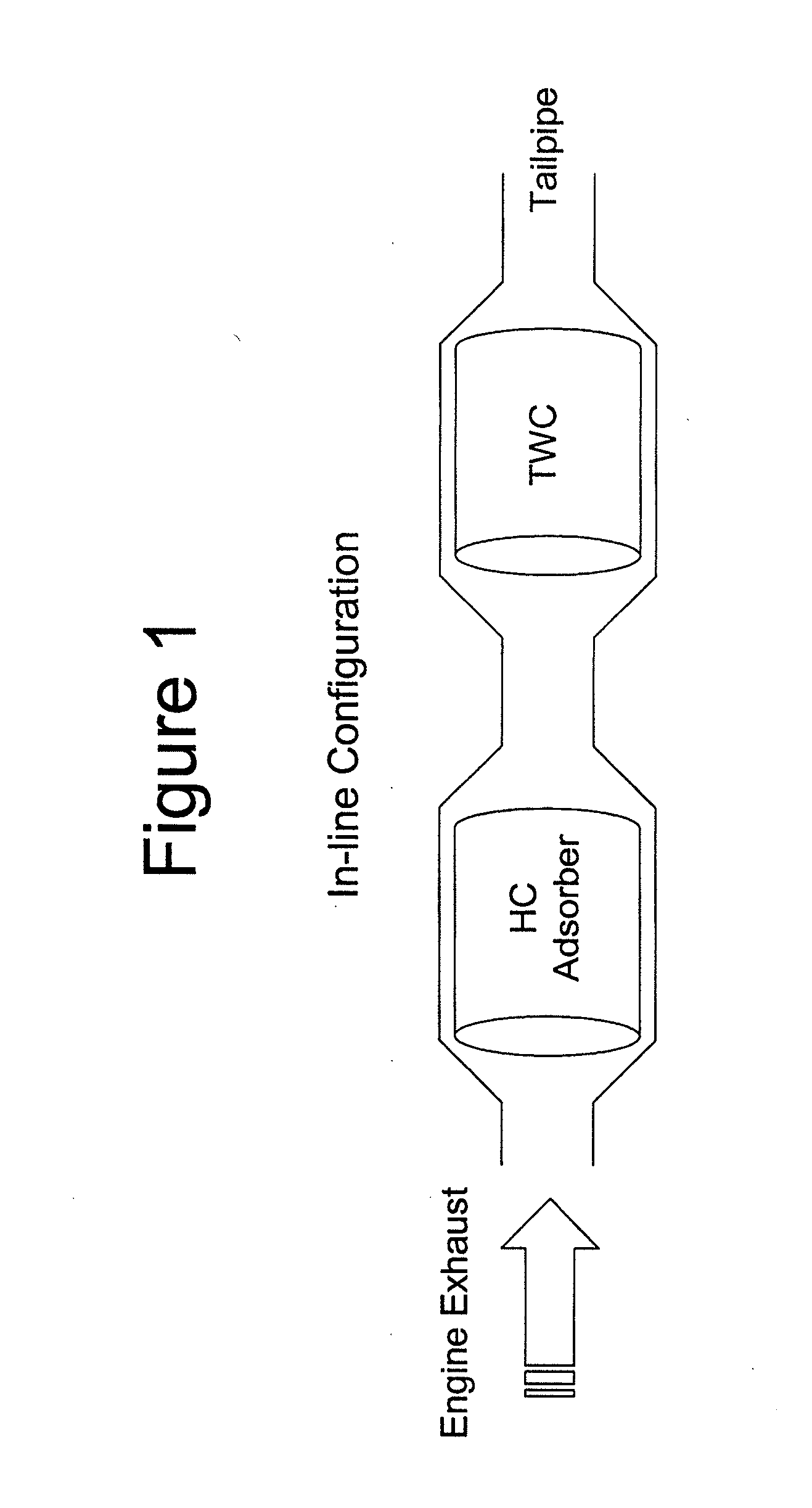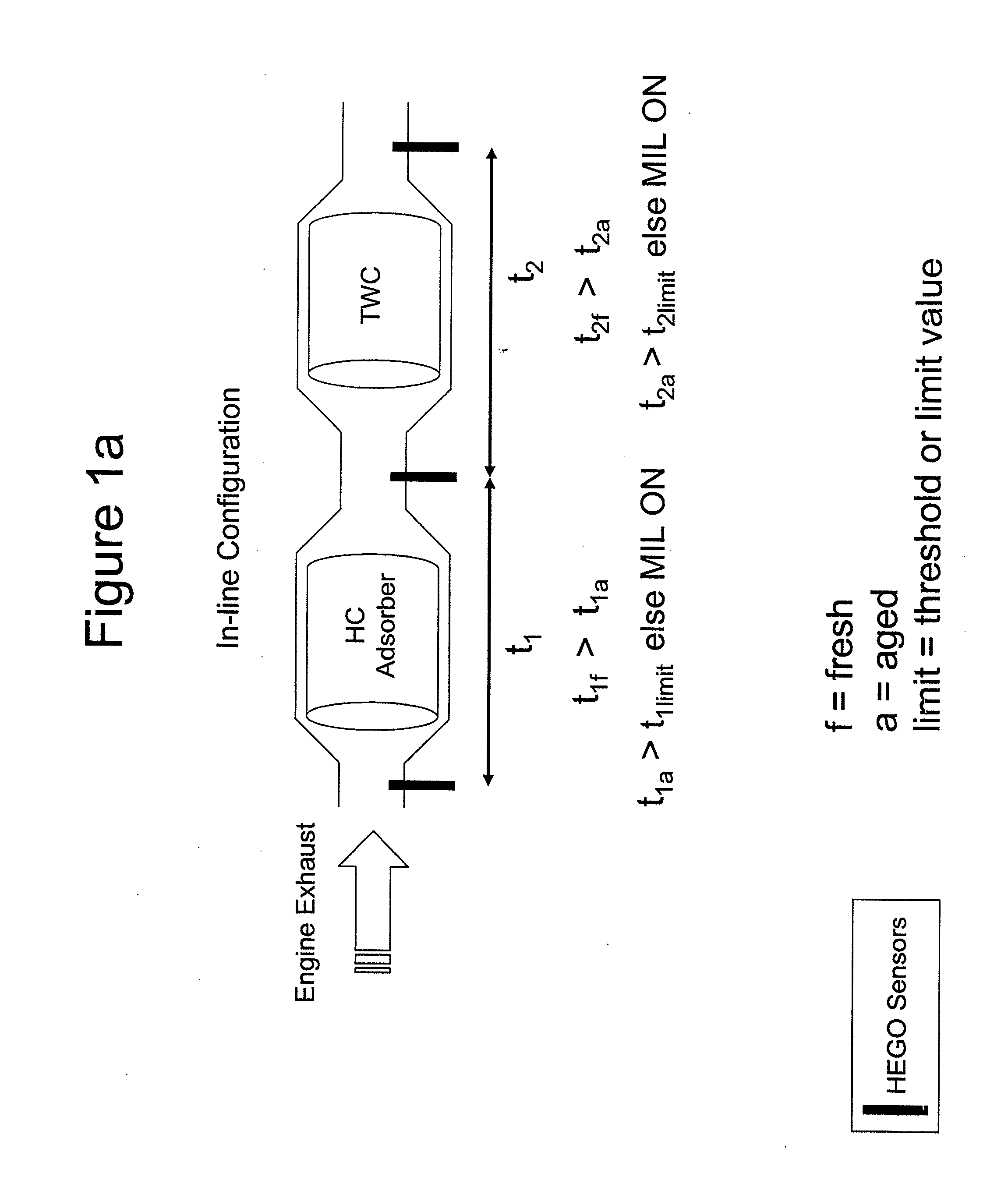HC Adsorber with OBD Capability
a technology of hc adsorber and capability, applied in the direction of machines/engines, mechanical equipment, exhaust treatment electric control, etc., can solve the problems of aging and fouling of components, and so as to facilitate combustion or decomposition of deposits, confirm the effect of restoration, and reduce the loss of hc storage capacity
- Summary
- Abstract
- Description
- Claims
- Application Information
AI Technical Summary
Benefits of technology
Problems solved by technology
Method used
Image
Examples
Embodiment Construction
[0036]The ion exchange of molecular sieves, also known as zeolites, with metal cations is well known for a variety of emission control catalysts, including SCR and HC-DeNOx catalysts. This type of process deposits cations within the internal pore structure of these materials. Often within catalytic cycles these metals change oxidation state to support chemical transformations. Oxygen, CO, and many hydrocarbons, alcohols, and related oxygenates are small enough molecules to easily diffuse into the pore structure of molecular sieves and related materials with microporous structures. As a result, oxidation or combustion reactions can be supported within these structures.
[0037]In the presence of oxygen, many exchanged metals within the structure also become oxidized. The rate and extent of their oxidation is temperature dependent. As a result, an appropriate metal exchanged zeolite exposed to an exhaust gas composition where oxygen is present in excess of the stoichiometric quantity req...
PUM
 Login to View More
Login to View More Abstract
Description
Claims
Application Information
 Login to View More
Login to View More - R&D
- Intellectual Property
- Life Sciences
- Materials
- Tech Scout
- Unparalleled Data Quality
- Higher Quality Content
- 60% Fewer Hallucinations
Browse by: Latest US Patents, China's latest patents, Technical Efficacy Thesaurus, Application Domain, Technology Topic, Popular Technical Reports.
© 2025 PatSnap. All rights reserved.Legal|Privacy policy|Modern Slavery Act Transparency Statement|Sitemap|About US| Contact US: help@patsnap.com



